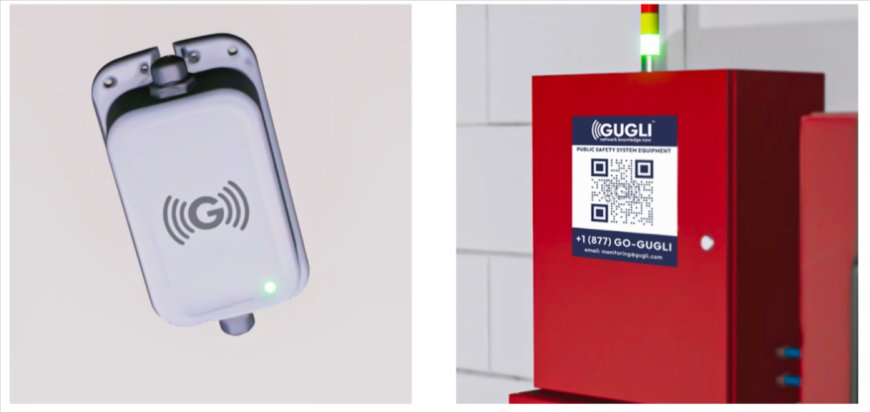How Does an Antenna Monitoring System Boost 5G and Satellite Networks?
Explore how an antenna monitoring system uses real-time analytics amid the 5G rollout and LEO satellite surge to ensure reliable signals, prevent outages, and optimize performance.

As 5G services expand and low-Earth orbit (LEO) satellite constellations proliferate, maintaining uninterrupted connectivity becomes more challenging. An antenna monitoring system offers operators the visibility they need to detect anomalies, respond quickly, and optimize network health. By continuously tracking signal strength, alignment, and environmental conditions, these systems play a vital role in avoiding downtime and preserving customer satisfaction.
Why Real?Time Visibility Matters
Network operators face constant threats from wind sway, temperature fluctuations, and hardware faults. Without real-time insights, problems can linger unnoticed for hours or days, leading to service interruptions. An antenna monitoring system overcomes this gap by:
-
Continuously collecting data on signal metrics such as RSSI, SNR, and bit error rate.
-
Alerting engineers the moment thresholds are breached, so corrective action begins immediately.
-
Logging trends that help predict emerging issues before they affect performance.
Therefore, real-time visibility not only reduces mean time to repair but also drives proactive maintenance strategies.
Core Components of an Antenna Monitoring System
A complete solution typically integrates several modules that work together seamlessly:
-
Sensors and Probes
-
Measure electrical parameters (voltage, current) and environmental factors (temperature, humidity).
-
Mount directly on the antenna tower or feed line for accurate, localized readings.
-
-
Data Aggregator
-
Collects raw measurements from multiple sensors.
-
Time?stamps every reading and ensures data integrity.
-
-
Analytics Engine
-
Applies algorithms to identify deviations from normal behavior.
-
Uses machine learning models to forecast failures based on historical patterns.
-
-
Alerting and Dashboard
-
Sends email, SMS, or SNMP traps when anomalies exceed predefined limits.
-
Displays key performance indicators on a user-friendly interface for 24/7 monitoring.
-
Together, these elements create a feedback loop that enhances decision?making and operational efficiency.
How 5G Rollout Elevates the Need for Monitoring
The transition to 5G introduces higher frequencies and denser cell deployments, which increase sensitivity to mechanical misalignment and environmental stress:
-
Millimeter?wave bands suffer greater path loss, making beam alignment critical.
-
Small cells demand tight tolerances; even slight pole movement can degrade coverage.
-
Network slicing requires guaranteed service levels, so any antenna drift threatens SLAs.
Consequently, an antenna monitoring system becomes indispensable for telecom operators striving to meet strict 5G performance promises.
Impact of LEO Satellite Constellations
Recent launches by companies such as SpaceX and OneWeb generate thousands of satellites in LEO, offering broadband connectivity worldwide. However, they also introduce new challenges:
-
Dynamic link handovers occur as satellites move across the sky, requiring constant tracking.
-
Ground station antennas must realign multiple times per hour to maintain locks.
-
Weather effects at high speedssuch as rain fadecan rapidly derail a link without prior warning.
An antenna monitoring system addresses these challenges by automating alignment checks and issuing instant alerts when a dish deviates beyond acceptable limits.
Key Benefits for Operators
Implementing an antenna monitoring system delivers measurable advantages:
-
Reduced Downtime: Automated alerts cut troubleshooting time by up to 70%.
-
Lower Opex: Predictive maintenance prevents costly emergency dispatches.
-
Improved Quality of Experience: End users enjoy fewer dropped calls and buffering-free video.
-
Data?Driven Planning: Trend analysis informs site upgrades and new cell placements.
Ultimately, operators see better return on investment by minimizing service disruptions and optimizing resource allocation.
Best Practices for Deployment
To achieve maximum value, follow these guidelines when rolling out an antenna monitoring system:
-
Define Clear Thresholds
-
Collaborate with RF engineers to set realistic alert levels for signal and mechanical parameters.
-
-
Integrate with OSS/BSS
-
Ensure the monitoring platform feeds into existing operational support systems for unified incident management.
-
-
Standardize Hardware
-
Use sensor modules from a single vendor to simplify calibration and maintenance.
-
-
Train Field Teams
-
Provide hands?on sessions so technicians can interpret dashboard alerts and perform rapid on?site fixes.
-
-
Review Regularly
-
Conduct monthly audits of alert logs to refine thresholds and eliminate false positives.
-
By adhering to these best practices, organizations can harness the full potential of their monitoring investment.
Case Study: Regional ISP Reduces Outages by 60%
A mid?sized internet service provider in North America faced repeated customer complaints after severe storms. After deploying an antenna monitoring system with temperature and tilt sensors, they achieved:
-
Immediate Alerts: Field crews received SMS notifications within seconds of storm?induced pole sway.
-
Proactive Repairs: Teams fixed misalignments before service degradation occurred.
-
Performance Insights: Monthly reports highlighted recurring hotspots, prompting targeted structural reinforcements.
As a result, the ISP saw outage frequency drop by 60% and customer satisfaction scores climb by 25% within six months.
Future Trends to Watch
Looking ahead, antenna monitoring systems will evolve through:
-
Edge Analytics: Performing data processing at the tower base to reduce latency.
-
AI?Driven Diagnostics: Using deep learning to pinpoint root causes without human intervention.
-
5G Standalone Support: Natively integrating with 5G core networks for end?to?end service assurance.
-
IoT Integration: Connecting monitoring sensors to broader smart?city platforms for holistic infrastructure management.
These innovations will further strengthen network resilience and drive operational excellence.
Conclusion
An antenna monitoring system represents an essential tool for any modern network operator. Amid the rapid 5G rollout and the growth of LEO satellite constellations, it ensures continuous visibility into antenna performance, accelerates fault resolution, and supports data?driven maintenance strategies. By adopting this technology today, providers can safeguard service uptime, enhance customer experiences, and prepare for the connectivity demands of tomorrow.











































